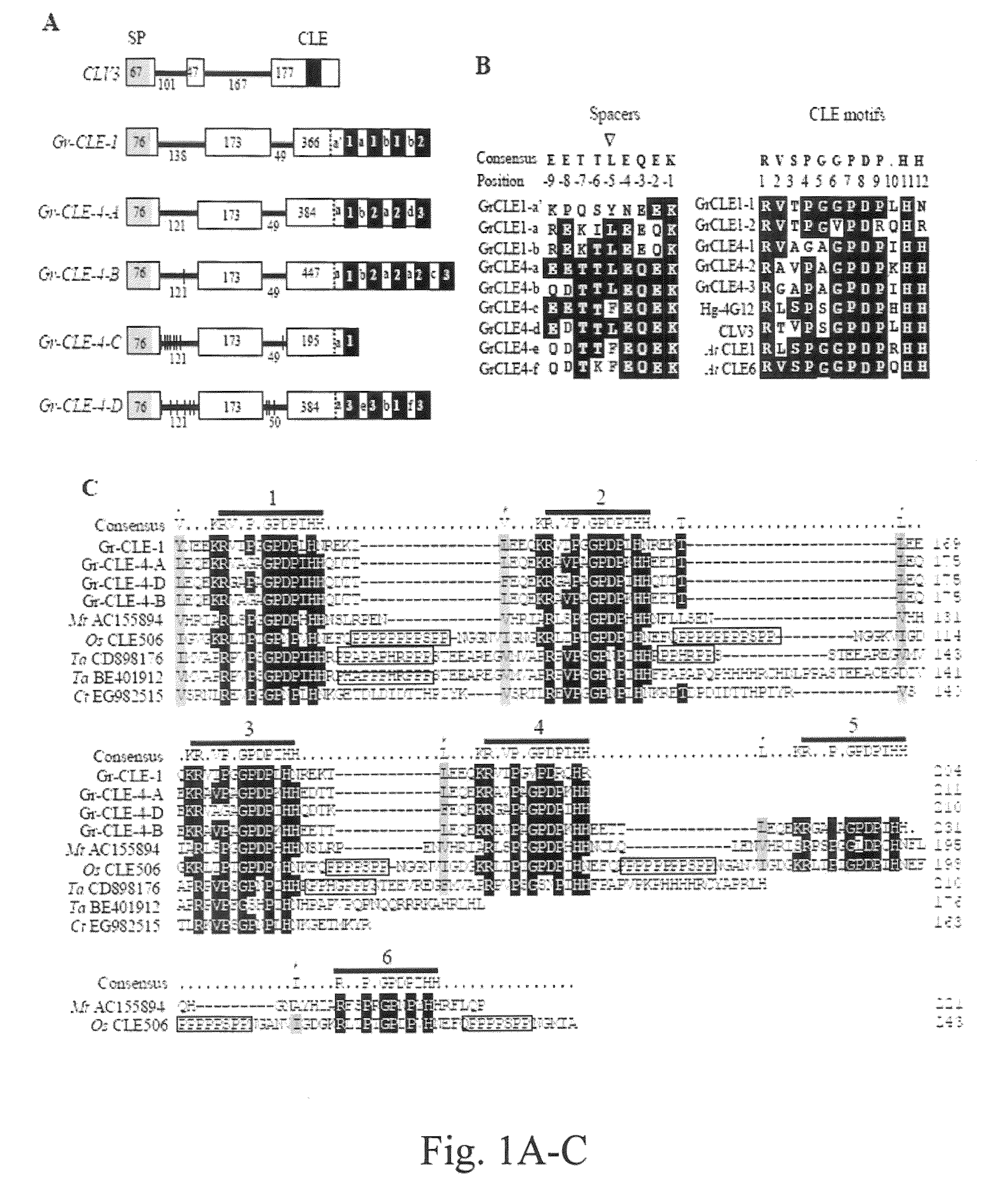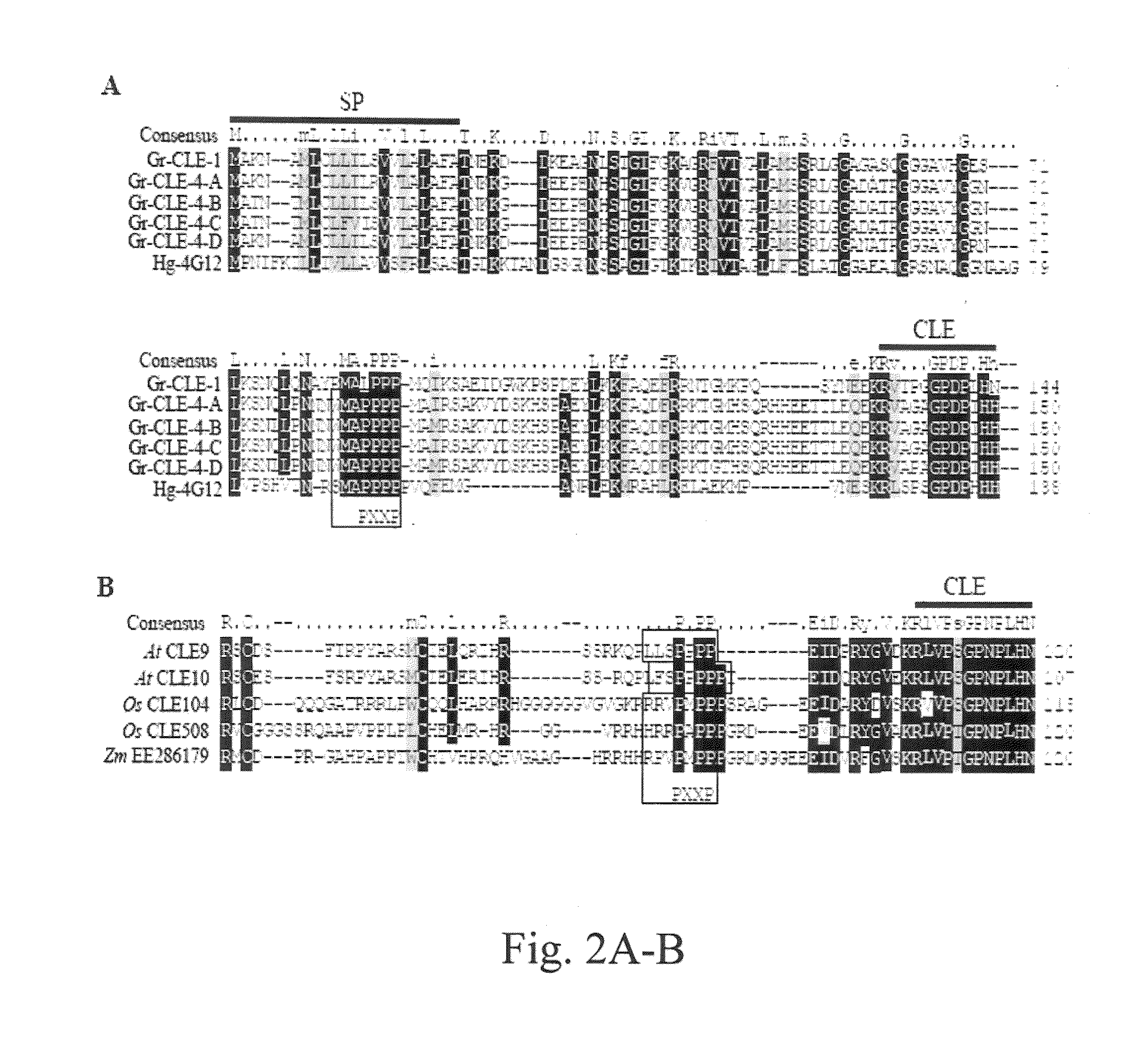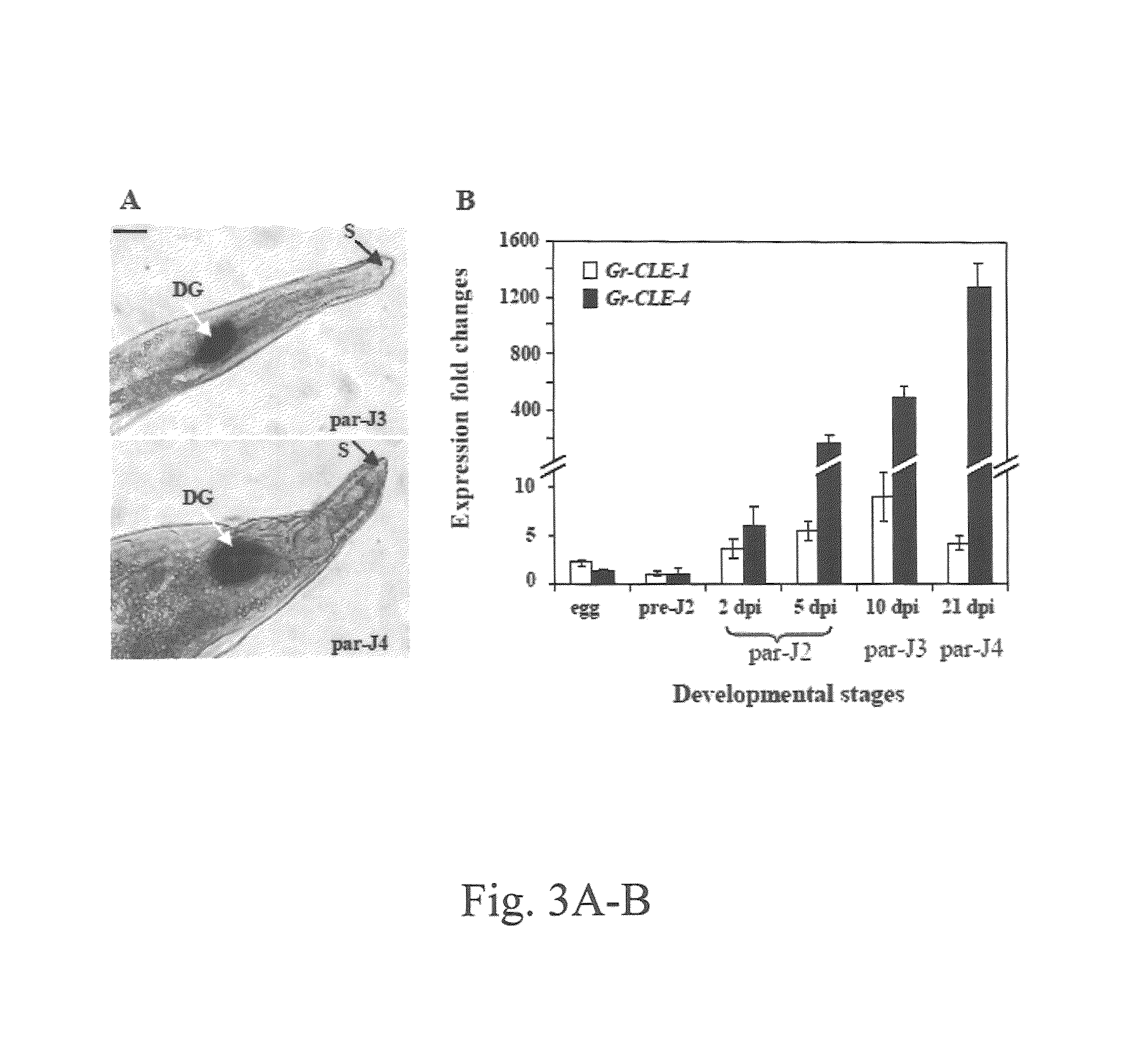Generating transgenic potatoes with novel resistance to potato cyst nematodes by silencing nematode parasitism genes of CLE -1 and CLE-4s
a technology of nematode parasitism and gene silencing, which is applied in the field of generating transgenic potatoes, can solve the problems of enlarged shoots and floral meristems
- Summary
- Abstract
- Description
- Claims
- Application Information
AI Technical Summary
Benefits of technology
Problems solved by technology
Method used
Image
Examples
example 1
Nematode Culture and Inoculation
[0103]The potato cyst nematode (G. rostochiensis) (pathotype R01) was propagated on greenhouse-grown susceptible potato (Solanum tuberosum cv. Katandin; Brodie et al. 1991. Amer. Potato J. 68:1-11) and cysts were extracted as described previously (Brodie, B. B. 1996. J. Nematol. 28:510-519). Cysts were soaked in distilled water for seven days and crushed to release the eggs. Infective second-stage juveniles (J2) were collected by hatching eggs in potato root diffusate (Clarke and Perry. 1977. Nematologica 23:350-368) and used for inoculation on monoxenic potato root cultures to obtain nematode-infected root materials as described previously (Lu et al. 2008. Mol. Biochem. Parasit. 162:1-15). Root segments collected at 2 and 5 days post-inoculation (dpi) were found to contain nematodes mainly at the parasitic J2 stage, and root segments collected at 10 and 21 dpi were found to contain nematodes mostly at parasitic J3 and J4 stages, respectively. These i...
example 2
Nucleic Acid Isolation
[0104]For mRNA isolation, frozen packed rehydrated cysts, preparasitic J2s or infected potato root segments were transferred into a Lysing Matrix D tube containing 1.4 mm ceramic spheres (Qbiogene, Carlsbad, Calif., USA) and homogenized using a Mini-Beadbeater-8 Cell Disrupter (BioSpec Products, Bartlesville, Okla., USA). The homogenized material was then used for mRNA extraction using the Dynabeads mRNA DIRECT Kit (Invitrogen, Carlsbad, Calif., USA) following the manufacturer's instructions. 30-50 ng of mRNA was used for first-strand cDNA synthesis. For nematode genomic DNA isolation, packed preparasitic J2s (−100 μl) were resuspended in 0.5 ml of lysis buffer containing 100 mM NaCl, 100 mM Tris-HCl, pH 8.0, 50 mMEDTA, pH 8.0, 1% SDA. 1% β-mercaptoethanol, and 100 μg / ml proteinase K (Invitrogen) and incubated at 65° C. for 30 min. Nematode DNA was extracted from the lysed mixture by phenol, phenol / chloroform (1:1), and chloroform extractions, then precipitated...
example 3
cDNA and Genomic Cloning
[0105]H. glycines CLE protein sequences (Gao et al., supra; Wang et al. 2001, supra) were used to search the NematodeNet EST database (retrieved from the Internet: Nucleic Acids Res. 25:3389-3402) and an EST from a cDNA library of G. rostochiensis was identified to have similarity to the CLE motif of H. glycines CLEs. A partial sequence of the target gene (named Gr-CLE-1) was cloned by PCR using primers of GR02145-48F and GR02145-605R and the first-strand cDNA obtained from preparasitic J2s as template. A 5′ RACE procedure (Invitrogen) was then used to obtain the rest of the 5′ untranslated region (UTR) of the gene. The full-length cDNA sequence of Gr-CLE-1 (SEQ ID NO: 1) was finally obtained by PCR using primers of CLE1-5UTRF1 and AUAP (Invitrogen). The full-length cDNA sequence of Gr-CLE-1 was found to encode a predicted protein of 204 amino acids that contained a putative N-terminal signal peptide (FIG. 1A) analyzed by the SignalP program (Nielsen et al. 1...
PUM
| Property | Measurement | Unit |
|---|---|---|
| Fraction | aaaaa | aaaaa |
| Fraction | aaaaa | aaaaa |
| Fraction | aaaaa | aaaaa |
Abstract
Description
Claims
Application Information
 Login to View More
Login to View More - R&D
- Intellectual Property
- Life Sciences
- Materials
- Tech Scout
- Unparalleled Data Quality
- Higher Quality Content
- 60% Fewer Hallucinations
Browse by: Latest US Patents, China's latest patents, Technical Efficacy Thesaurus, Application Domain, Technology Topic, Popular Technical Reports.
© 2025 PatSnap. All rights reserved.Legal|Privacy policy|Modern Slavery Act Transparency Statement|Sitemap|About US| Contact US: help@patsnap.com



